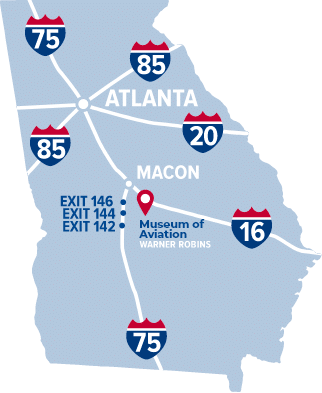The F-101 lineage included several versions: low-altitude fighter-bomber, photo-reconnaissance, two-seat interceptor and transition trainer. To accelerate production, no prototypes were built, and the first Voodoo, an F-101A, made its initial flight on 29 September 1954. When production ended in March 1961, nearly 800 Voodoos had been built. Development of the unarmed RF-101, the world’s first supersonic photo-recon aircraft, began in 1956. While 35 RF-101As and 166 RF-101Cs were produced, many earlier single-seat Voodoos were converted to reconnaissance configuration.
Warner Robins Air Logistics Center provided logistics management of the communications, fire control and bomb navigation systems in all F-101 aircraft worldwide. The RF-101C on display was delivered to the USAF in July 1958 and assigned to the 66th Tactical Reconnaissance Wing at Loan AB, France. It served at various units in Europe and the US before being retired from the 186th Tactical Reconnaissance Group (ANG) at Key Field, Meridian, Mississippi in October 1978. It was transferred to the Museum in 1992.
The aircraft is marked as it appeared while flying with the 4414th Tactical Reconnaissance Training Squadron, 363rd Tactical Reconnaissance Wing located at Shaw Air Force Base, South Carolina, during the early 1970s.





